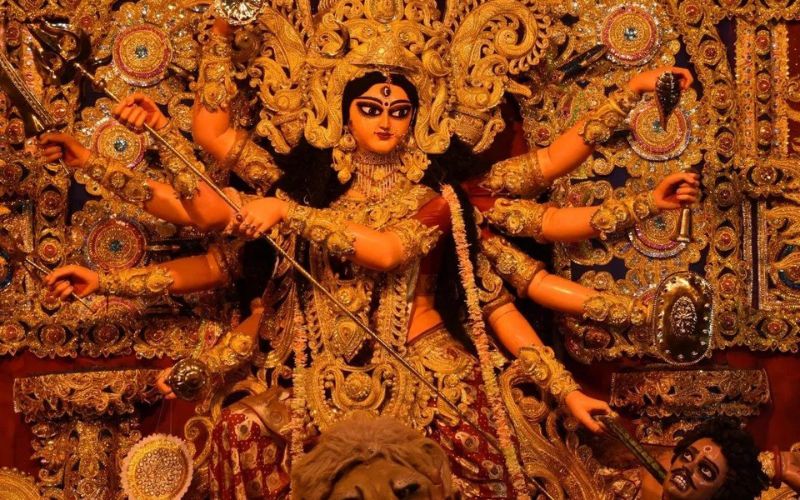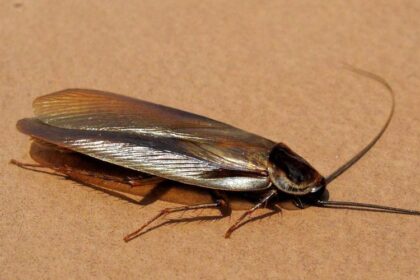Durga Puja, also known as Durgotsava, is one of the most vibrant and widely celebrated festivals in India, particularly in the states of West Bengal, Assam, Bihar, Odisha, and Tripura, as well as among Bengali communities worldwide. This auspicious festival commemorates the victory of Goddess Durga over the demon Mahishasura, symbolizing the triumph of good over evil.
Origins and Significance of Durga Puja
The origins of Durga Puja can be traced back to ancient mythology and scriptures. According to Hindu mythology, Goddess Durga, an embodiment of divine feminine power, was created by the collective energies of various gods and goddesses to defeat the demon Mahishasura, who threatened the heavens and earth with his tyranny.
Durga Puja is typically observed during the Hindu calendar month of Ashwin, which corresponds to September or October in the Gregorian calendar. The festival spans over several days, with the main celebrations culminating on the tenth day, known as Vijayadashami or Dashami.
Rituals and Traditions of Durga Puja
- Mahalaya: The festival begins with Mahalaya, which marks the invocation of Goddess Durga. It is believed that on this day, the goddess begins her journey from her heavenly abode to earth.
- Pandals and Idol Installation: Communities come together to construct elaborate pandals (temporary structures) where beautifully crafted idols of Goddess Durga and her children (Lakshmi, Saraswati, Ganesha, and Kartikeya) are installed. Artisans spend months preparing these idols, which are worshipped with great devotion during the festival.
- Prayers and Offerings: Each day of Durga Puja is marked by special prayers and rituals conducted by priests and devotees. Offerings of flowers, fruits, sweets, and incense are made to the goddess, accompanied by melodious bhajans (devotional songs) and mantras.
- Sindoor Khela: On the final day, married women participate in Sindoor Khela, where they smear each other and the idols with vermilion (sindoor) as a symbol of marital bliss and longevity.
- Visarjan: The festival concludes with the immersion (visarjan) of the idols in rivers or water bodies, symbolizing the departure of Goddess Durga to her celestial abode. The processions during visarjan are a spectacle of colors, music, and joyous fervor.
Cultural and Social Impact
Durga Puja transcends religious boundaries and is celebrated with equal enthusiasm by people of different faiths and communities. It serves as a unifying force, bringing together families, friends, and neighborhoods in joyous festivities.
- Art and Craft: The festival provides a platform for local artisans and craftsmen to showcase their skills through the creation of intricate idols, decorative artworks, and themed pandals that often depict mythological narratives or contemporary social issues.
- Culinary Delights: Food plays a significant role during Durga Puja, with communities indulging in traditional delicacies such as khichuri (a rice and lentil dish), labra (mixed vegetable curry), and sweets like rasgulla and sandesh.
- Global Celebration: Beyond India, Durga Puja is celebrated with equal fervor in countries with significant Bengali diaspora communities, including the United States, United Kingdom, Canada, Australia, and various other parts of the world. The festival has become a cultural extravaganza that showcases the rich heritage and traditions of Bengal.
Countdown to Durga Puja
As the months pass, anticipation for Durga Puja builds up among devotees and enthusiasts alike. The countdown to Durga Puja is not merely a numerical one; it is a journey filled with spiritual devotion, cultural pride, and communal harmony.
- Preparation and Planning: Months in advance, communities begin planning for the festival, from fundraising for pandals to organizing cultural programs and events. Each day leading up to the festival is marked with meticulous preparation and excitement.
- Decorations and Themes: Pandals are adorned with thematic decorations that often reflect current social issues, historical events, or artistic interpretations of mythology. The creativity and innovation displayed in these decorations add to the festive ambiance.
- Community Engagement: Durga Puja fosters a sense of community spirit and togetherness, with people volunteering their time and resources to ensure the smooth conduct of rituals and celebrations. It is a time when bonds are strengthened and new friendships are forged.
Conclusion
In conclusion, the question “How many days are left for Durga Puja?” is not just a query about time; it encapsulates the eagerness and excitement that surround this grand festival. Durga Puja is more than a religious observance; it is a cultural extravaganza that celebrates tradition, creativity, and the spirit of unity. As devotees eagerly await the arrival of Goddess Durga, they also celebrate the joyous anticipation of reconnecting with loved ones, relishing traditional flavors, and immersing themselves in the vibrant colors and rhythms of this extraordinary festival.
As the countdown continues, the fervor for Durga Puja only intensifies, promising yet another year of divine blessings, communal celebrations, and cherished memories.





